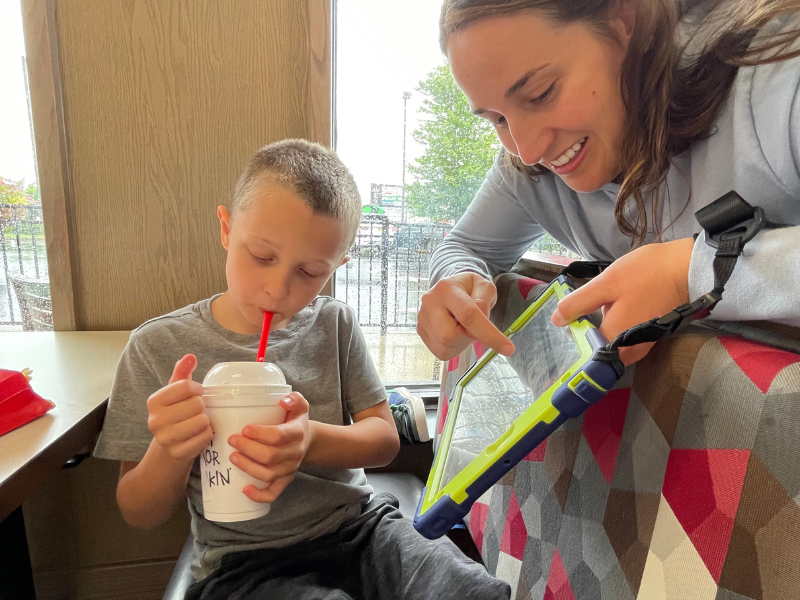Communication is a fundamental human need, but for some individuals, speaking verbally can be challenging or impossible. This is where Augmentative and Alternative Communication, or AAC, comes into play. In this post, we’ll explore what AAC is, who can benefit from it, and how it’s changing lives.
What does AAC stand for?
AAC stands for Augmentative and Alternative Communication. It refers to all forms of communication, other than oral speech, that are used to express thoughts, needs, wants, and ideas. AAC is used when an individual has difficulties with speech production, language understanding, or both.
“Augmentative” refers to communication methods that supplement existing speech, while “Alternative” refers to methods that replace speech entirely.
Types of AAC:
AAC systems can be broadly categorized into two types:
Unaided AAC:
- Doesn’t require any external tools
- Includes gestures, sign language, and facial expressions
- Examples: American Sign Language (ASL), gesturing to indicate needs
Aided AAC:
- Requires external tools or devices
- Can be low-tech or high-tech
- Low-tech examples: Picture boards, communication books
- High-tech examples: Speech-generating devices, tablet apps
Who Can Benefit from AAC?
AAC can benefit individuals of all ages who have difficulty with speech or language. This may include people with:
- Autism Spectrum Disorder
- Cerebral Palsy
- Developmental delays
- Acquired conditions like stroke or traumatic brain injury
- Progressive neurological disorders like ALS
- Temporary conditions affecting speech
It’s important to note that AAC is not just for those who cannot speak at all. It can also support individuals with limited or unclear speech.
How AAC Works
The specifics of how AAC works depend on the system being used, but generally:
- The user selects symbols, pictures, or words to convey their message.
- This selection can be made through various means (e.g., touching a screen, using eye gaze, or activating a switch).
- For high-tech devices, the selected message is often converted into spoken words.
- For low-tech systems, the communication partner interprets the selected symbols.
Benefits of AAC
- Enhances communication abilities
- Increases independence
- Improves social interactions
- Reduces frustration and behavior issues related to communication difficulties
- Supports language development
- Can improve literacy skills
Implementing AAC
Implementing AAC typically involves:
- Assessment by a speech-language pathologist (like us at bAACTalk!) to determine the most appropriate AAC system
- Customization of the system to meet the individual’s needs
- Training for the user, family members, and caregivers
- Ongoing support and adjustments as needs change
Myths about AAC
It’s important to dispel some common myths about AAC:
Myth: AAC hinders natural speech development.
Reality: Research shows that AAC can actually support speech development.
Myth: A person must have a certain level of cognitive ability to use AAC.
Reality: AAC can be beneficial for individuals with a wide range of cognitive abilities.
Myth: AAC is a last resort.
Reality: Early implementation of AAC can significantly improve communication outcomes.
Conclusion
AAC is a powerful tool that opens up a world of communication possibilities for individuals who struggle with verbal speech. By providing alternative ways to express thoughts, needs, and ideas, AAC enhances quality of life, fosters independence, and promotes inclusion. Whether it’s a simple picture board or a sophisticated eye-gaze device, AAC has the potential to give everyone a voice.
If you think you or a loved one could benefit from AAC, don’t hesitate to reach out to us! Remember, it’s never too early or too late to explore AAC options.





